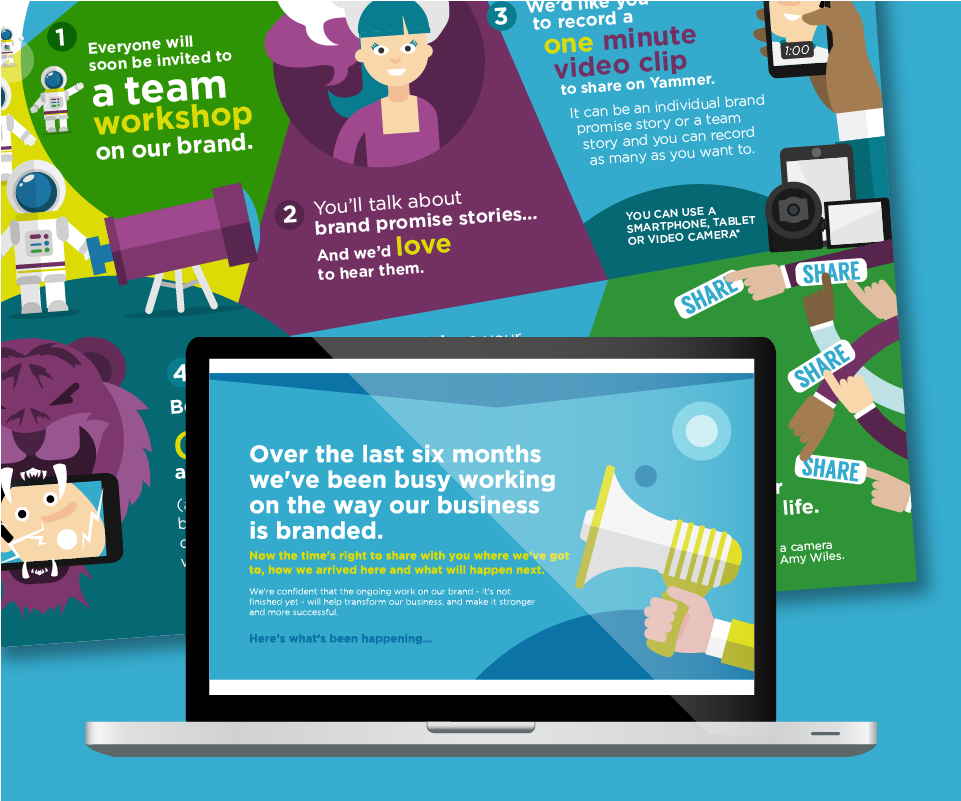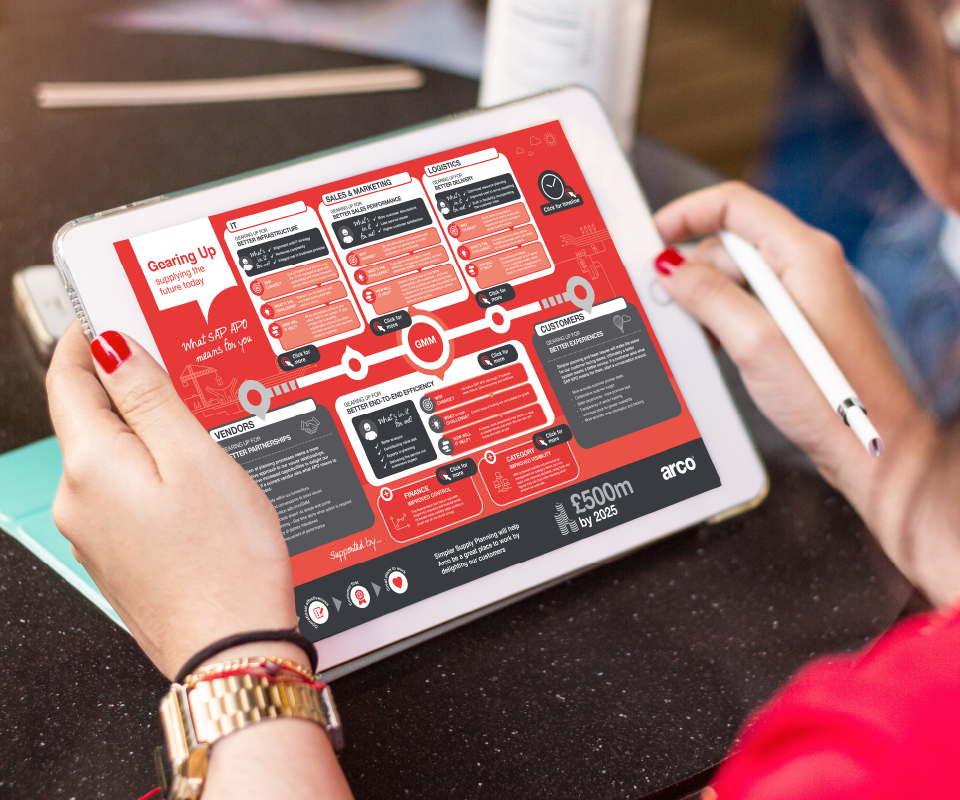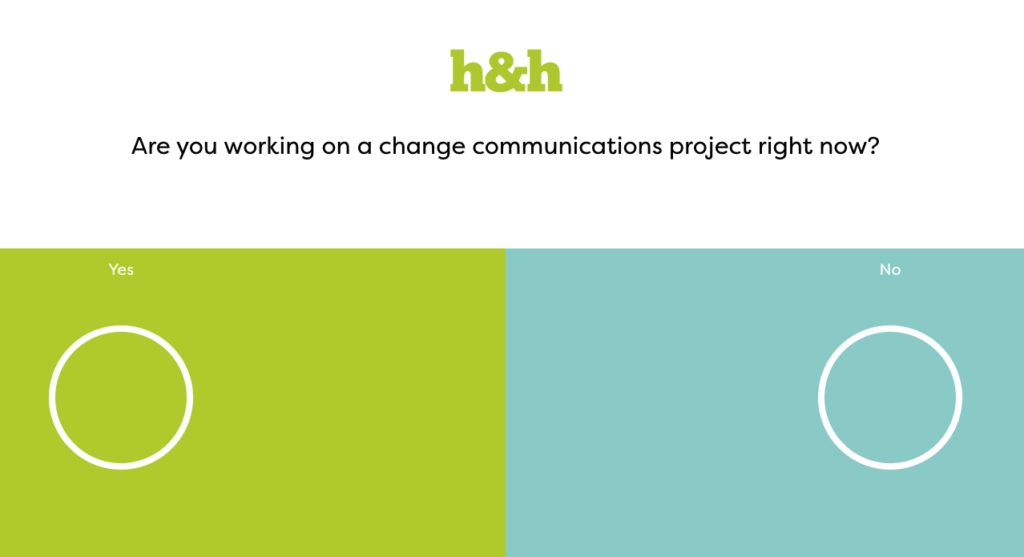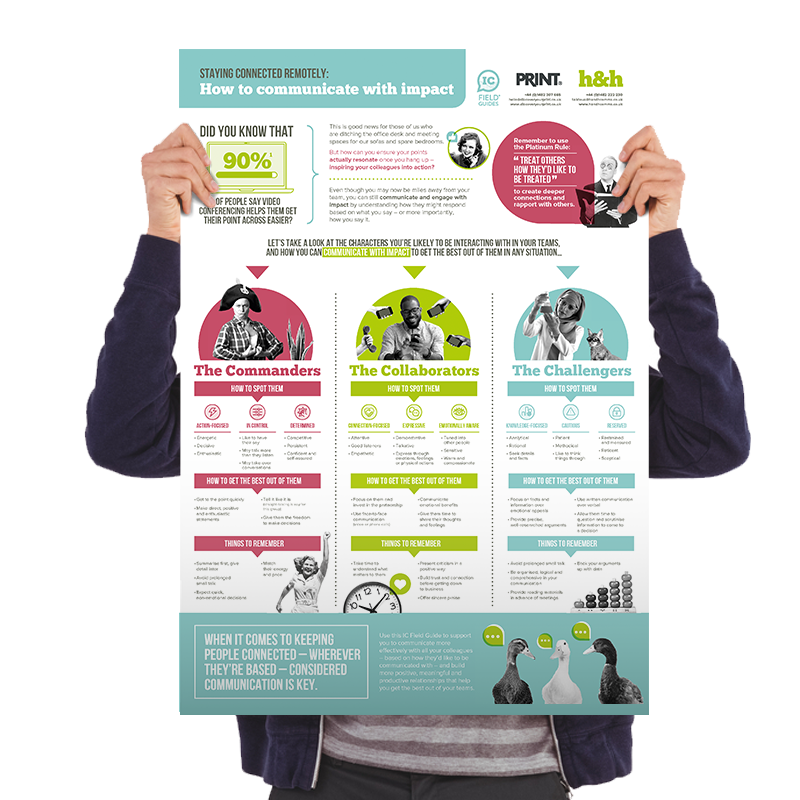The perfect time to start communicating change is right now.
2020 has been a year of unpredictable personal and professional adjustments for just about everybody. Organisations have had to make big changes with little warning – changes which have impacted the job roles, career progression and even livelihoods of their employees.
At a time when teams want stability, many employers are having to push through dramatic changes just to stay afloat.
The only thing that doesn’t seem to be changing anytime soon is our need to continue taking positive action and adapting to challenging situations.
So how do we take the disruption and uncertainty that is often associated with change and transform the process into something positive?
The answer lies in our approach to communicating these changes.
Proactive vs reactive change communication
The difference between proactive change communication and reactive lies in your approach to conflict. Proactive communication anticipates problems before they arise, whereas reactive approaches deal with problems once they surface.
Proactive communication recognises that big changes can be difficult for employees to adjust to. We all have comfortable routines and familiar ways of working that we don’t want to lose.
That’s why a proactive approach to communicating change aims to bring employees on-board from at the earliest possible point. It reduces frustration further down when employees’ challenges start to surface.
Not only does a good proactive approach reduce problems down the line; it also sparks enthusiasm.
Research shows that employees cope better with change when they understand the purpose behind your plan and can see a clear path ahead. One expert highlights that positive attitudes towards your ideas help people to support the changes, even if the transition might be stressful.
The bottom line is that change goes better for businesses when employees are bought in. And that’s where proactive change communication comes in.
Engaging employees from the beginning
When we worked with KCOM to unify their five brands under a single banner, we were asked to help them launch an internal communication campaign around the new brand before it had even been confirmed.
So we launched an interim campaign called ‘One’ to help employees get on board with the idea of a unified brand. With dialogue and conversation at the heart of the programme, our proactive approach to the early stages of KCOM’s changes led to insights and engagement that we were able to carry through the programme’s following phases.

3 steps to communicating change well
Good change communication starts with a good narrative.
Humans love stories because there is always a satisfying solution to a problem or conflict. You can introduce change in much the same way.
First, set the scene. Ensure that everyone understands why the team is being taken on this journey. Create a detailed roadmap of the most important steps.
Then get them involved in the discussion. Allow people to share ideas so that everyone’s voice is heard and individuals become more connected to the cause. It’s key to empower individuals to develop their own tactics and goals when bringing about change.
Finally, ensure leaders in the organisation are aware of their responsibilities and can create the right culture for change.
This process ensures that change communications doesn’t miss any critical points in shifting employees’ ways of thinking or working. By giving them the why as well as the what and how, you’re helping them to understand the situation and inviting them to be a part of the solution.
Engaging employees throughout the change process
It’s not enough to blast an email out to the company and expect everything to work out. Communicating change proactively means addressing possible issues throughout the change programme – even before they come up!
We’re big believers in using creative ways to boost your internal comms.
When we worked with Arco to help them introduce a new digital platform for internal use, we used a combination of narrative materials, video, experiential activities and scenario-based challenges designed to raise knowledge and awareness.

It’s impossible to generalise which exact engagement tactics will work – after all, you have to use the tools most appropriate for your individual circumstances. But there are a few common elements that work in most cases.
First, provide your employees with materials to help them understand what to expect from the changes, including a timeline.
Then, make sure that there are opportunities for interaction between employees and management to help them learn new processes and raise any concerns early. Throughout the process, show your employees that their input is welcome and respected by asking their opinions and engaging with them on a regular basis.
It’s also important to support leaders in feeling comfortable about having these conversations; team leaders are employees too, so always communicate and engage them first so they can inspire others.
Communicating change remotely
The dramatic rise in remote working that we’ve seen in 2020 is a widespread change that could make communicating other changes more challenging.
There’s a lot of advice out there for communicating with remote workers, including these few tips that we like from Gallup. Don’t sacrifice clarity for brevity (how many times have we all had to re-read emails because we’re not quite sure that they’re saying?). And don’t go overboard with the number of messages sent.
How to communicate with impact while working remotely.
Download our guide to help you make more effective connections with your colleagues – no matter where they’re based.
If employees are going to engage with your proactive change programme they need to understand what’s going on. Regularly update the team on progress through the right channel at the right time, and say it as clearly as you can. Using visual aids in your messages is a great way to avoid getting too wordy.
Interactive comms strategies while working remotely
The interactive side of proactive change communication is more difficult when teams are remote. In-person workshops and office chats can be difficult and expensive to organise.
But in the world of 2020, we have infinite opportunities to engage our people in online spaces. The only thing to remember is that when interacting through a screen, it’s even more important to ensure you create engaging activities to keep people energised, focused and engaged.
Polls, gamification and Q&As are just some of the ways you can bring your employees into the fold wherever they are. Push, our instant feedback tool, is a great example of an engagement device that can be used in the office or by a remote workforce.

Be available to your employees
Whatever lines of communication you have for remote work, keep them active and be responsive through them if your employees have questions. It’s also worthwhile being proactive in sharing employee feedback upwards to leaders and decision makers.
Whether your workforce is remote, in the office, or split between the two, even the best-laid plans need as many people as possible on board.
Keep your employees at the centre of whatever proactive strategy you choose and remember that their commitment is the key to your plan’s success.
Need help tackling a change programme in your organisation? We can help you transform the way employees think about change and get them happily shifting the way they work – now and in the future.






